Keeping your furry friend safe during car rides is paramount. A Best Rated Dog Seat Belt Harness is not just a piece of pet gear; it’s a critical safety device that protects your dog, yourself, and other passengers. While safety is the primary concern, factors like comfort, ease of use, and durability also play a significant role in choosing the right harness. This guide explores why these harnesses are essential and highlights some of the top-rated options available.
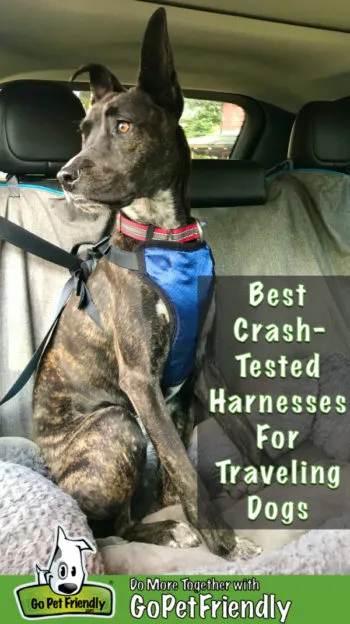 A brindle dog wearing a dog seat belt harness in the car
A brindle dog wearing a dog seat belt harness in the car
The Crucial Role of Crash-Tested Dog Harnesses
Whether you’re heading to the local park or embarking on a cross-country adventure, ensuring your pet is secure in the vehicle is a top priority. Crash-tested dog seat belt harnesses are designed to do more than just keep your dog from moving around; they can significantly reduce the risk of injury in the event of a sudden stop or collision. Unrestrained pets can become dangerous projectiles. In a 50 mph crash, a 10-pound pet can exert up to 500 pounds of force, while a 60-pound dog can exert a staggering 3,000 pounds of force. This immense force can cause severe injury to both the pet and the occupants of the vehicle.
Beyond immediate safety, a secure harness prevents your dog from distracting the driver, which is a leading cause of accidents. In some regions, driving with an unrestrained animal is illegal. Even where not explicitly outlawed, drivers can still face citations for distracted driving if their pet causes a hazard. Therefore, buckling up your pet with a reliable best rated dog seat belt harness is not just recommended; it’s a responsible choice for everyone’s safety.
Understanding Crash-Test Standards and Certifications
The journey to creating safe pet travel products has been ongoing. In 2011, the Center for Pet Safety (CPS) initiated independent studies to assess the crashworthiness of pet travel harnesses. Their landmark 2013 study revealed that many popular harnesses failed catastrophically. This led to increased awareness and a demand for better products.
It’s important to note that, unlike child safety seats, there are no mandatory government crash-test standards for pet car harnesses. This means manufacturers’ claims of “crash-tested” can be vague. The CPS has stepped in to provide independent testing and certification. Harnesses that have undergone and passed these rigorous CPS tests carry significant weight in terms of proven safety. When evaluating options, look for harnesses that are CPS-certified, as this offers a higher degree of confidence in their ability to protect your pet.
When choosing a best rated dog seat belt harness, consider the ease of installation and how comfortable it is for your dog. A harness that fits well and is comfortable will be less likely to cause distress, making car rides more enjoyable for everyone.
How We Selected the Top Dog Seat Belt Harnesses
With over a decade of full-time travel and extensive product testing with our own dogs, we’ve gained considerable insight into the pet product market. Our selection process prioritizes products designed with the same meticulous attention to detail as those for human family members. We focus on brands known for their quality and safety standards.
Crucially, we also consider the dog’s perspective. A harness might meet safety standards, but if it’s uncomfortable or causes anxiety, it’s not ideal. We evaluate each harness for fit, ease of use (putting it on and taking it off), and the overall comfort experienced by the dog during travel. For a secure fit, understanding your dog’s measurements is key. If you’re considering dog seat covers for your car to protect your upholstery, remember that the harness is the primary safety feature.
Top-Rated Dog Seat Belt Harnesses for Safety and Comfort
After thorough research and testing, here are some of the best-rated dog seat belt harnesses that prioritize safety, comfort, and durability:
BEST OVERALL
OptimusGear Defender Harness
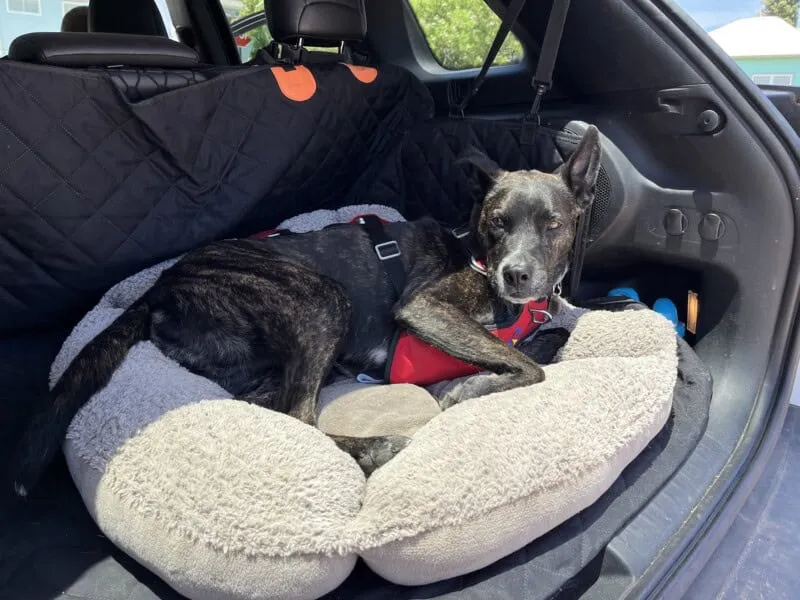 Brindle dog in crash-tested dog harness from OptimusGear
Brindle dog in crash-tested dog harness from OptimusGear
The OptimusGear Defender Harness stands out for its exceptional durability. Constructed with custom metal buckles and high-strength webbing, it’s designed to withstand significant impact forces. The padded chest and back panels ensure comfort for your dog during extended drives. Its over-the-head design is familiar to many dog owners, and the heavy-duty metal buckles make it easy to secure. With both chest and back leash attachment points, it’s also convenient for quick walks.
- Crash-Tested: Meets Federal Motor Vehicle Safety Standard (FMVSS213).
- Sizes Available: S to XL.
- Weight Capacity: 25 to 75 pounds.
- Installation: Utilizes vehicle LATCH anchors for a secure connection.
RUNNER UP
Sleepypod Clickit Sport Harness
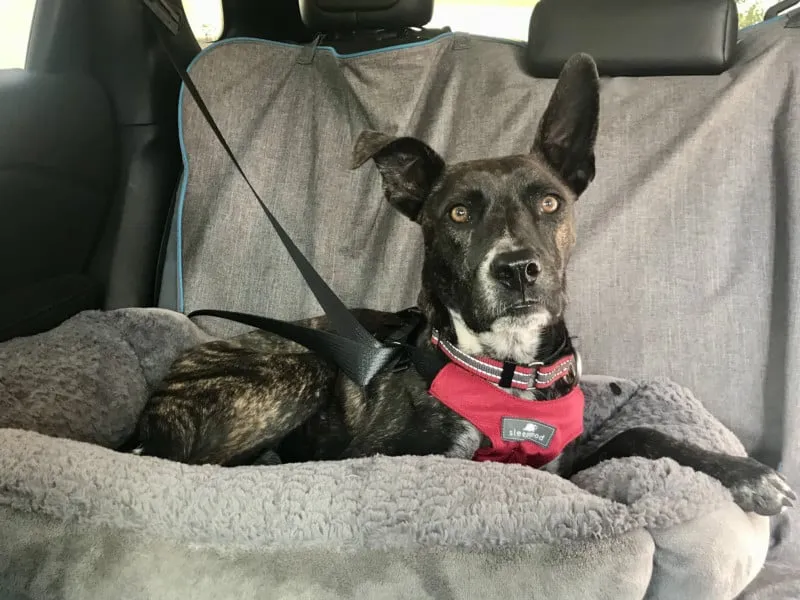 Brindle dog in a car buckled in with a red Sleepypod crash-tested harness
Brindle dog in a car buckled in with a red Sleepypod crash-tested harness
Sleepypod is renowned for its thoughtfully designed, high-quality products. The Clickit Sport Harness features an “Infinity Loop” design that combines a padded vest with seat belt-grade straps to absorb impact forces. Its three seat belt contact points offer excellent security. The step-in style makes it relatively easy to put on, and it’s available in various colors. However, the straps can sometimes be challenging to adjust, and it might not be the best fit for very deep-chested breeds. For added comfort and to protect your car, consider pairing this with mini car seat covers for dogs.
- Crash-Tested and Certified: By the Center for Pet Safety.
- Sizes Available: S to XL.
- Weight Capacity: 18 to 90 pounds.
- Installation: Seat belt passes through loops on the back of the harness.
BEST FOR ESCAPE ARTISTS
Ruffwear Load Up Harness
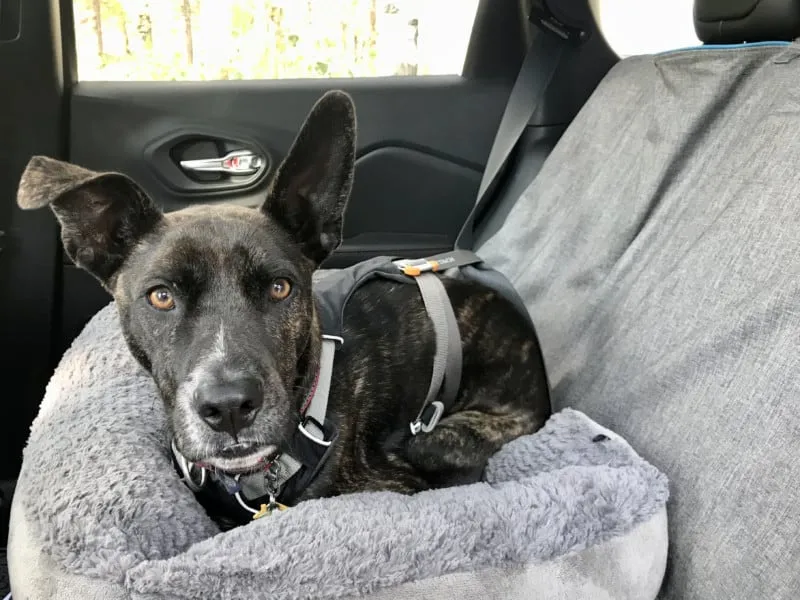 Brindle dog buckled up in the car in a crash-tested dog harness from Ruffwear
Brindle dog buckled up in the car in a crash-tested dog harness from Ruffwear
Built for adventure, the Ruffwear Load Up Harness is incredibly durable. It has undergone dynamic crash testing and static tensile testing. The all-metal hardware and tough polyester shell ensure longevity. Its standout feature for escape artists is the large belly panel, which provides ample coverage to prevent dogs from wriggling out. While very strong, the large belly panel can sometimes make it feel warm, and it lacks leash attachment rings for walks.
- Crash Tested: For dogs up to 75 pounds.
- Sizes Available: XXS to L/XL.
- Girth Capacity: 13 to 42 inches.
- Installation: Seat belt passes through a loop at the back.
MOST CONVENIENT
Kurgo Enhanced Strength Tru-Fit Harness
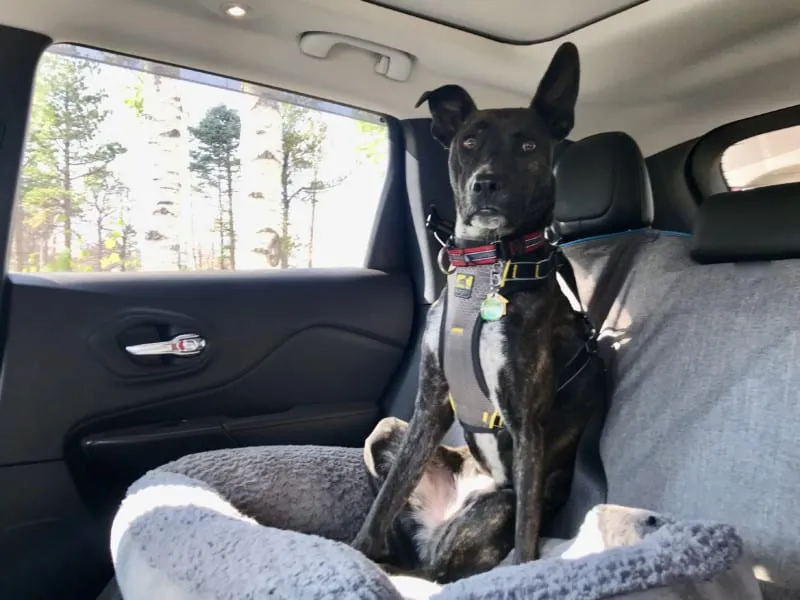 Brindle dog buckled up in the car in a crash-tested dog harness from Kurgo
Brindle dog buckled up in the car in a crash-tested dog harness from Kurgo
The Kurgo Enhanced Strength Tru-Fit Harness offers a great balance of safety and convenience. It was crash-tested at a facility that adheres to Federal Motor Vehicle Safety Standard No. 213. Featuring all-steel hardware, it comes with front and back D-ring leash attachments, making it versatile for walks. Its unique installation method allows you to leave the seat belt buckled with the carabiner attached, simplifying the process of getting your dog in and out of the car. However, the nesting buckles can be tricky for some users.
- Crash Tested: At a university testing facility for dogs up to 75 pounds at 30 mph.
- Sizes Available: XS to XL.
- Weight Capacity: 5 to 105 pounds.
- Installation: Uses an included carabiner to attach harness straps to the seat belt.
MOST VERSATILE
Sleepypod Clickit Terrain Harness
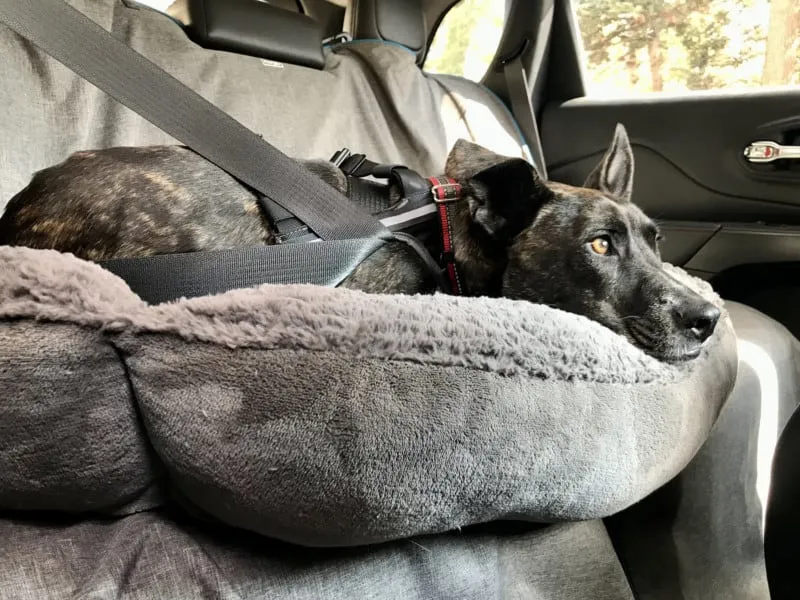 Brindle dog buckled up in the car in a crash-tested Sleepypod Terrain dog harness
Brindle dog buckled up in the car in a crash-tested Sleepypod Terrain dog harness
Building on the Clickit Sport, the Sleepypod Clickit Terrain Harness offers enhanced versatility. It shares the same core safety features, including the Infinity Loop design and CPS certification. The unique aspect of the Terrain harness is its compatibility with the optional Terrain Pack, transforming it into a functional backpack. This makes it ideal for owners who plan to hike or explore after their car journey. Like its sibling, it’s made from durable materials and features multiple D-rings for leash attachment.
- Crash-Tested and Certified: By the Center for Pet Safety.
- Sizes Available: S to XL.
- Weight Capacity: 18 to 110 pounds.
- Installation: Seat belt passes through both sides of the harness.
Other Highly-Rated Dog Seat Belt Harnesses
AllSafe Comfort Harness
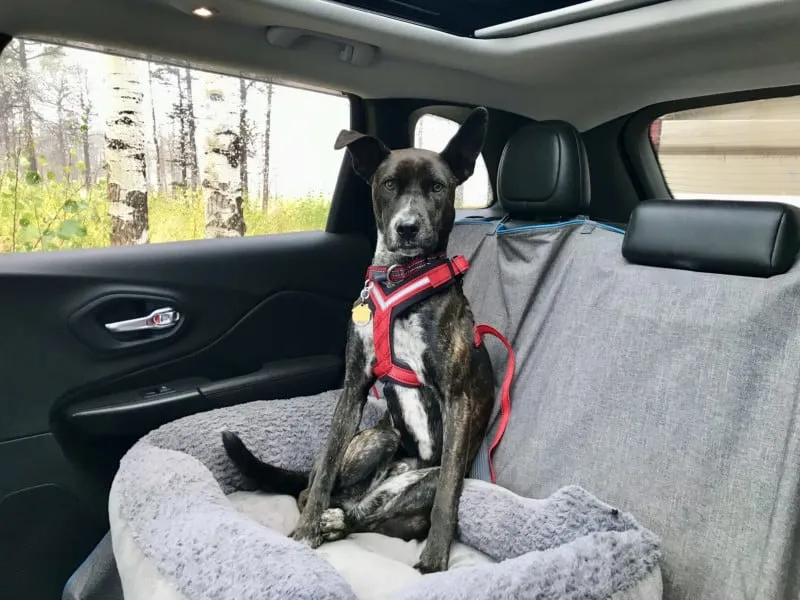 Brindle dog buckled up in the car in the AllSafe crash-tested dog harness
Brindle dog buckled up in the car in the AllSafe crash-tested dog harness
Developed in Germany, the AllSafe Comfort Harness has undergone rigorous crash testing according to ECE R-17 and ISO27955 standards. It boasts a simple, non-bulky design with padded chest and back plates for comfort. While it offers convenient leash attachment points, the installation process involving screw locks can be more complex than other options. The over-the-head design also requires feeding the dog’s paw through the harness, which might be slightly less convenient for some.
- Crash Tested: In Germany according to ECE R-17 and ISO27955.
- Sizes Available: S to XL.
- Installation: Involves attaching screw locks and clasps to the seat belt.
EzyDog Drive Harness
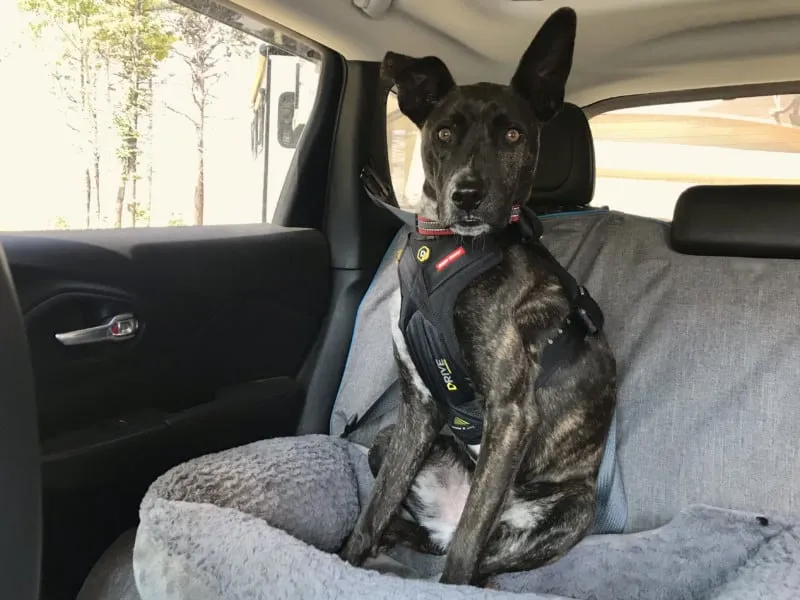 Brindle dog in a crash-tested dog harness from EzyDog
Brindle dog in a crash-tested dog harness from EzyDog
The EzyDog Drive Harness is a robust and structured option. Crash-tested in Australia at a facility recognized by international regulatory agencies, it features an ergonomic molded chest plate and seat belt webbing straps. The aluminum alloy glides contribute to its strength. Its step-in design is user-friendly, and it includes double D-rings for leash attachment. However, the sturdy chest plate might be less comfortable for very long journeys, and the wide chest plate might not suit narrow-chested dogs. This harness would pair well with single dog car seat covers to keep your vehicle pristine.
- Crash Tested: At Automotive Safety Engineering in Australia.
- Sizes Available: S to L.
- Weight Capacity: 15 to 75 pounds.
- Installation: Seat belt passes through two loops on the back.
Kurgo Impact Harness
 Brindle dog buckled up in the car in a crash-tested dog harness from Kurgo
Brindle dog buckled up in the car in a crash-tested dog harness from Kurgo
The Kurgo Impact Harness is constructed with robust 4,000-pound tubular webbing and all-steel buckles, ensuring significant strength and durability. It was crash-tested at Calspan using current Federal Motor Vehicle Safety Standard guidelines for child restraint systems. While highly durable, this harness has an over-the-head design that requires feeding both of the dog’s legs through restraint loops, making it less convenient to put on. The webbing can also require frequent readjustment.
- Crash Tested: At Calspan using current PPSC testing guidelines.
- Sizes Available: S to XL.
- Weight Capacity: 10 to 108 pounds.
- Installation: Seat belt passes through two restraint straps on the back.
Making Car Rides Safe and Comfortable for Your Dog
The perfect fit is crucial for any best rated dog seat belt harness. A loose harness can allow your dog to slip out, compromising safety. Always consult the manufacturer’s sizing charts and fitting recommendations carefully. If your dog falls between sizes, it’s generally advisable to choose the larger size to allow for adjustments.
We understand that some dogs may initially dislike the confinement of a seat belt. However, it’s a vital safety measure. Making the harness as comfortable as possible is key to encouraging acceptance. Introduce the harness around the house first, letting your dog get accustomed to wearing it. Practice buckling them in for short periods, rewarding them with treats. Gradually increase the duration they spend buckled in and begin with short car trips. Always ensure these initial trips end at a positive destination, like the dog park.
Prioritizing safety with a quality harness and providing a positive experience will ensure your travels with your canine companion are both secure and enjoyable. If you’re looking for additional ways to protect your vehicle, explore options like bucket car seat covers for dogs to maintain cleanliness and comfort.
